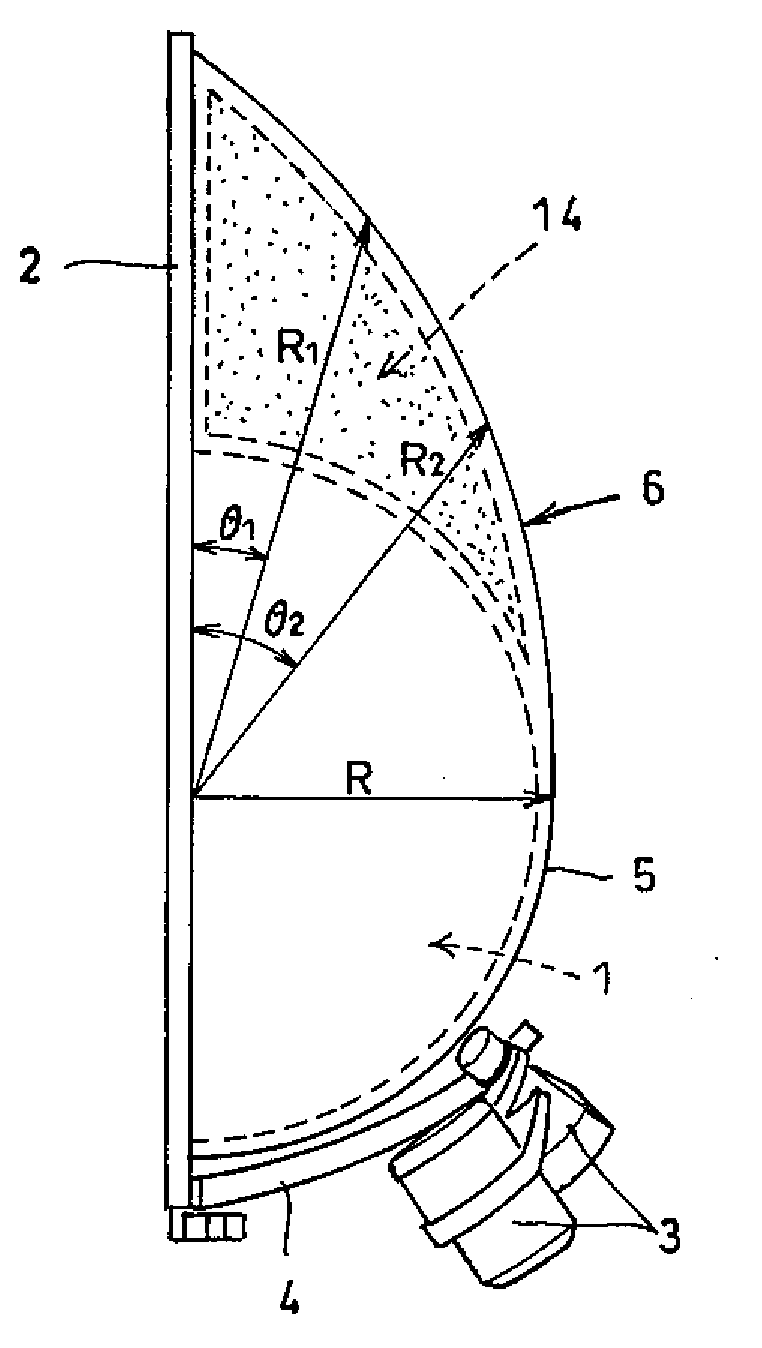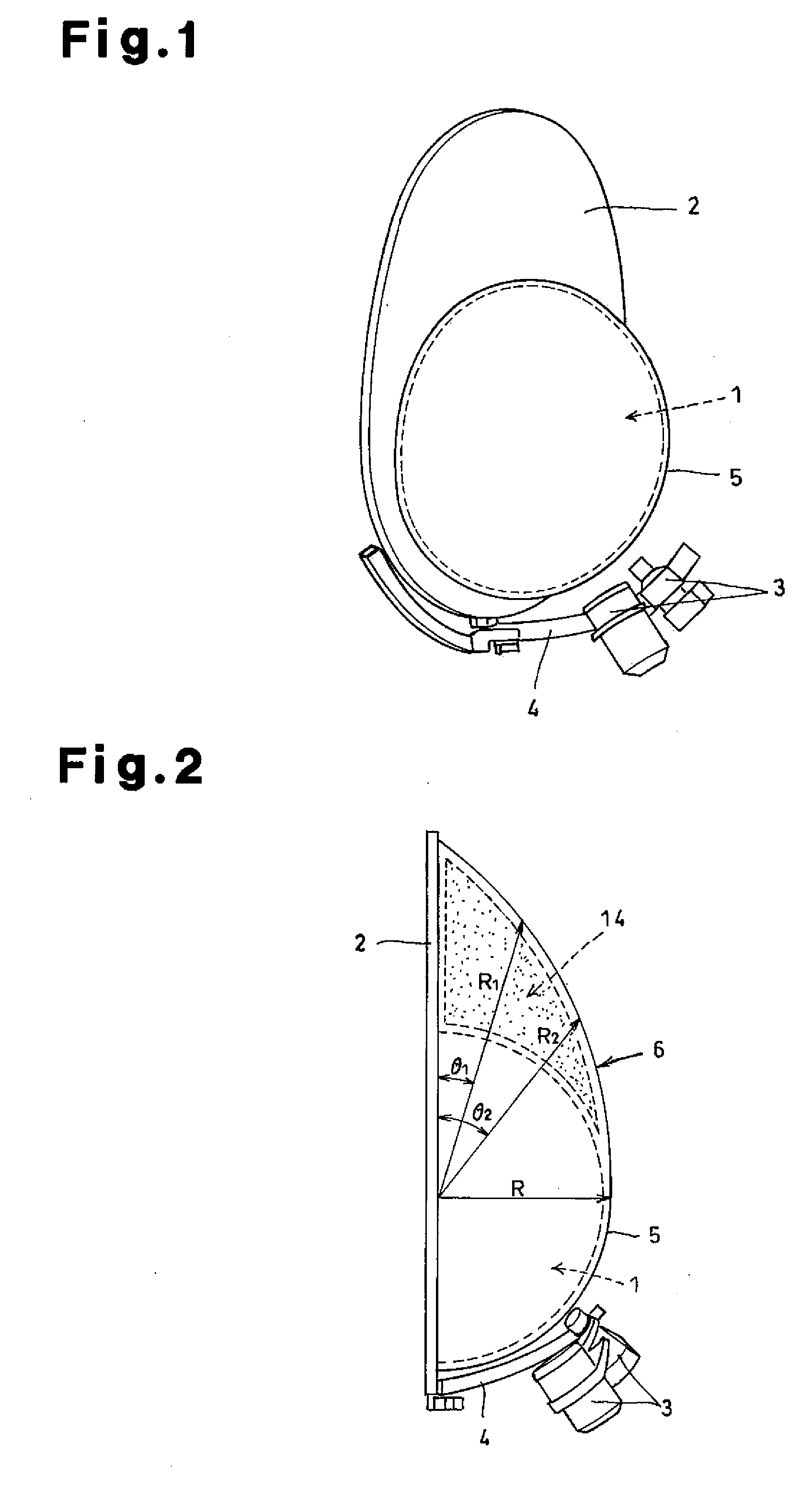Radio wave lens antenna device
a technology of antenna device and wave wave, which is applied in the direction of antenna details, antennas, basic electric elements, etc., can solve the problems of low signal reception sensitivity and easy affect of antenna device, and achieve the effect of subtly lowering the signal reception sensitivity and reducing the collection of rainwater
- Summary
- Abstract
- Description
- Claims
- Application Information
AI Technical Summary
Benefits of technology
Problems solved by technology
Method used
Image
Examples
Embodiment Construction
[0070]One embodiment of the present invention will now be discussed with reference to the accompanying drawings. A radio wave lens antenna device according to the present invention includes a semispherical Luneburg lens (hereinafter, simply referred to as the lens) 1, which is shown in FIG. 1, a radio wave reflection plate (hereinafter, simply referred to as the reflection plate) 2, antenna elements 3, and a holder 4. The reflection plate 2 lies along a bisectional surface of the sphere of the lens 1 and is larger than the diameter of the lens. The antenna elements 3 are arranged at a focal point of the lens. The holder 4 holds the lens elements 3.
[0071]The lens 1 is formed by a dielectric, has an internal dielectric constant that substantially varies between 2 to 1 from the center toward the outer side, and has a focal point located near the spherical surface. A semispherical first cover 5 is formed from resin, has a smooth surface, and covers the periphery of the lens 1 to protect...
PUM
 Login to View More
Login to View More Abstract
Description
Claims
Application Information
 Login to View More
Login to View More - R&D
- Intellectual Property
- Life Sciences
- Materials
- Tech Scout
- Unparalleled Data Quality
- Higher Quality Content
- 60% Fewer Hallucinations
Browse by: Latest US Patents, China's latest patents, Technical Efficacy Thesaurus, Application Domain, Technology Topic, Popular Technical Reports.
© 2025 PatSnap. All rights reserved.Legal|Privacy policy|Modern Slavery Act Transparency Statement|Sitemap|About US| Contact US: help@patsnap.com



